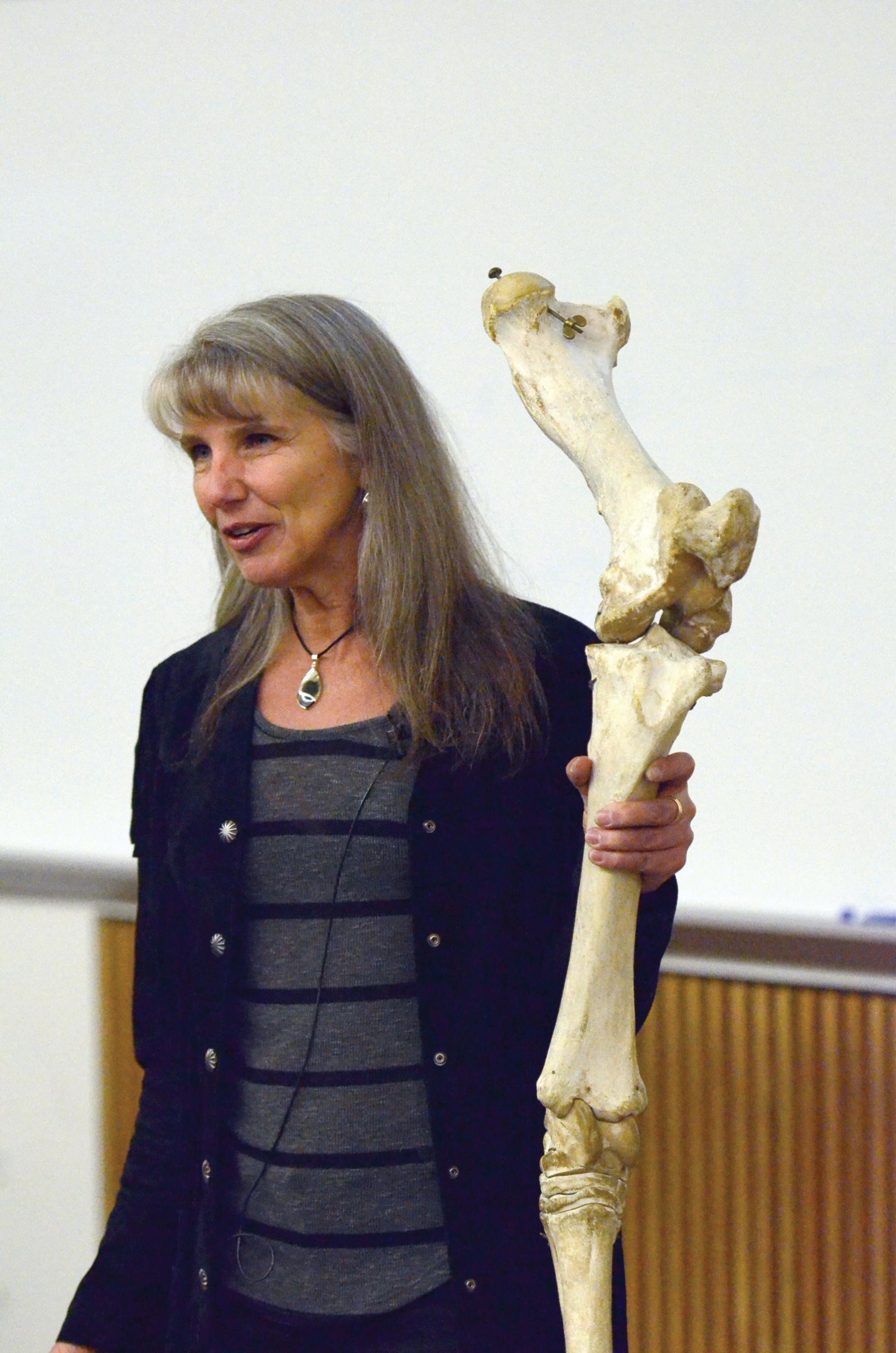Alumna makes groundbreaking dinosaur research discovery
A leading paleontologist and USU graduate returned to her alma mater to present some of her important discoveries about dinosaurs on Friday in a speech hosted by the biology, chemistry and geology departments at USU. She detailed the research process that led her team to their surprising results.
While analyzing bones from a Tyrannosaurus rex, Mary Schweitzer and her team at North Carolina University were surprised to discover soft tissue of dinosaurs after dissolving away the bone’s minerals. The 68-million-year-old dinosaur tissue, after being placed in a solution, became flexible and began to show biological features that had previously not been seen in such ancient fossils, which she said was not supposed to happen.
Dissolving bone minerals was a technique Schweitzer adapted from researchers who study birds because dinosaur bones share many features.
“In order to study medullary bone in modern birds, most scientists will remove the mineral, which leaves behind the organic component and the osteoblasts here, because the mineral gets in the way of analyzing medullary bone,” she said.
However, Schweitzer says analyzing dinosaur bones this way was something researchers had not done because they believed the technique would be useless.
“If you’re dealing with a fossil, conventional wisdom states that over the course of geologic time, all of the organics are removed,” she said. “All you have is this mineral, or the shell, of a dinosaur. So if you dissolve it, you have nothing left. Who goes around and dissolves dinosaur bone? That would be me.”
Despite the surprise at finding biological materials that resembled bone and blood vessel structures, Schweitzer waited to publish the results.
“Most of this data I found about two years before I tried to publish it, because I was scared to death,” she said.
When she did publish her results, she said she was met with skepticism within the scientific community. Other researchers were skeptical that she found osteocytes, important cells in bones, and believed they could be less-ancient microbial films. Schweitzer argues, however, the cells have characteristics that microbial films do not share.
Lance Seefeldt, a USU professor of biochemistry, said the skepticism she faced is an important part of science.
“I think there’s some skepticism, and that’s good. That’s what we want in science. We want people to be skeptical. That’s how we push forward the frontier and understand the truth,” Seefeldt said. “She’s doing what she is supposed to be doing; coming out and telling what her evidence is, and scientists are thinking about it and challenging it.”
Schweitzer says one reason other researchers have not conducted similar studies is the need to work with other academic disciplines.
“The problem with what I do is that people who go into paleontology do it because they don’t like to do lab work,” Schweitzer said. “They love to be outside, so the questions they ask are questions they can do on that basis. The people who have the really good fossils don’t know about the molecular stuff, and the people who know the molecular stuff don’t generally have access to the fossils.”
In order to conduct research like what she has done, researchers have to get the “ivory tower barriers” and collaborate with many different specialties.
Since her discovery, Schweitzer and her team have published more than 18 papers in major scientific journals such as Science and PLOS ONE.
Seefeldt said her research is well-known in the scientific community.
“As most professors, you follow the high level of biochemistry things happening in the world, and her work is among the most exciting out there,” Seefeldt said.
While her research might seem unrelated to everyday life, Schweitzer believes her investigations can bring new insights into human diseases and technological innovations.
“Give me a problem, and I’ll find a dinosaur solution,” she said.
She said dinosaurs are a way to get children and teenagers interested in science.
“Dinosaurs are a gateway drug to higher science,” she said.
– bradley.s.robinson12@gmail.com

